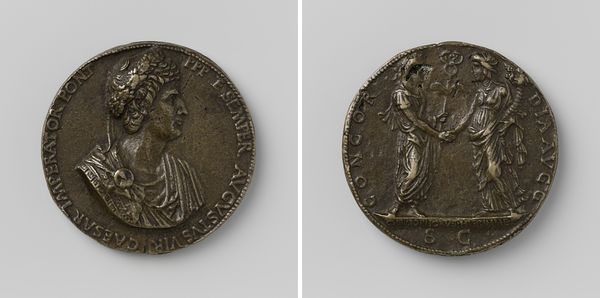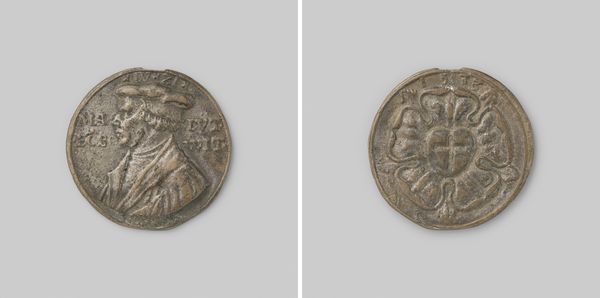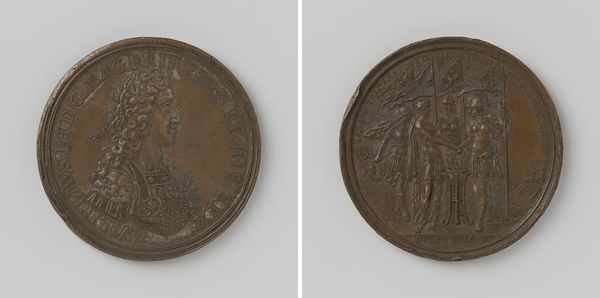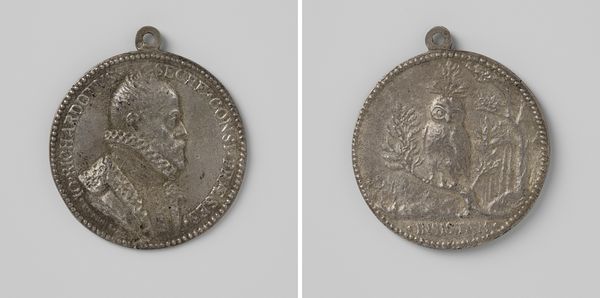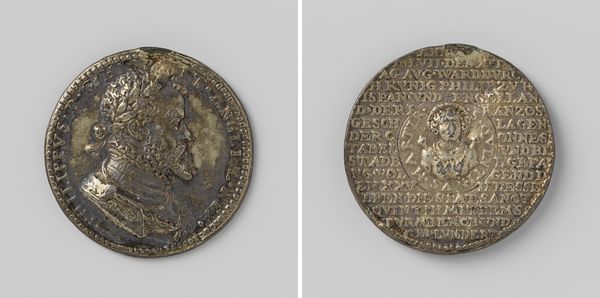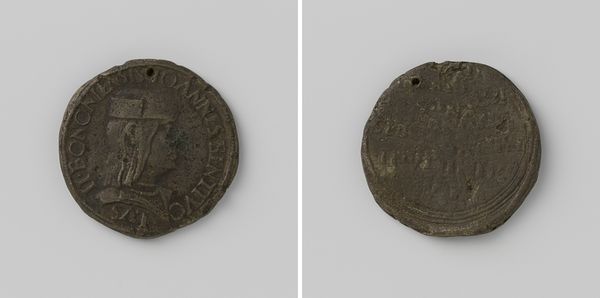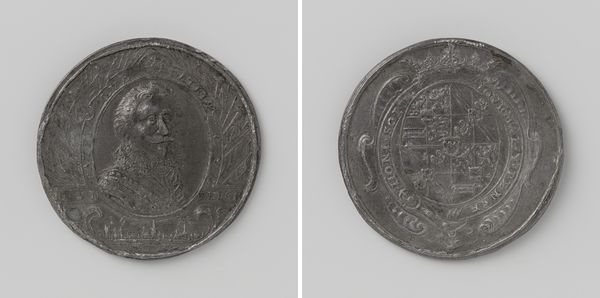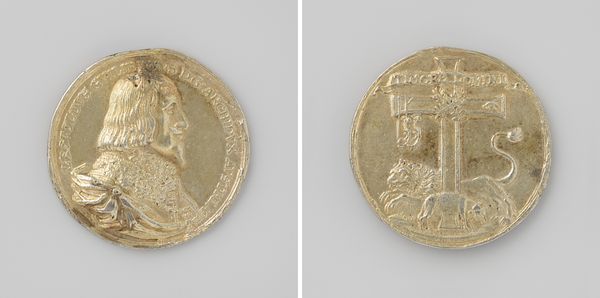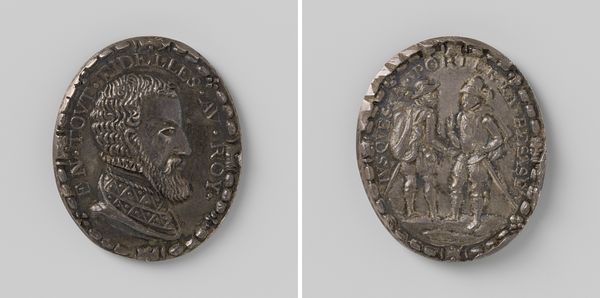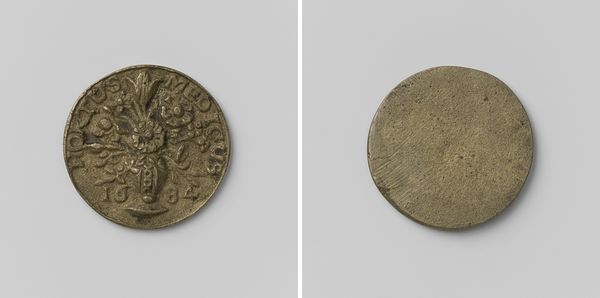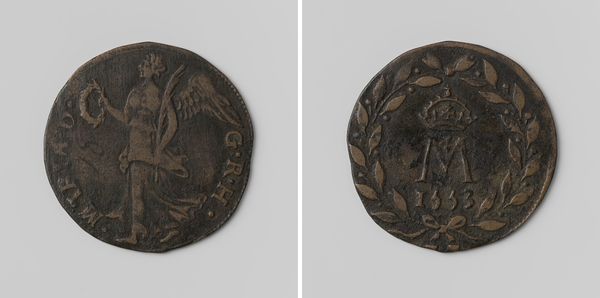
carving, metal, bronze, sculpture
#
portrait
#
medieval
#
carving
#
metal
#
sculpture
#
bronze
#
11_renaissance
#
sculpting
#
sculpture
#
history-painting
#
statue
Dimensions: diameter 7 cm, weight 32.23 gr
Copyright: Rijks Museum: Open Domain
Curator: Look at this intriguing bronze medal! It’s titled *Verheffing van prins Maurits tot ridder van de Kouseband*, or in English, "The Elevation of Prince Maurice to Knight of the Garter.” It’s dated 1616, and we believe it’s by an anonymous artist. What springs to mind when you see it? Editor: Immediately, I think about power—both personal and symbolic. There’s a certain gravity in the subject's gaze and how it’s memorialized in such a sturdy material as bronze. There's a formal stiffness, too, as the sculptor captures the solemn moment. Curator: Exactly. It’s not just a likeness; it's a statement. Prince Maurice was a pretty significant figure at the time. His acceptance into the Order of the Garter would have been a strategic coup and further legitimized the young Dutch Republic. The medal itself feels like a piece of political theatre. Editor: Absolutely. It highlights the ways in which honors were not simply bestowed, but actively leveraged. In a society marked by rigid social hierarchy, medals such as this circulated and reaffirmed established power structures and conferred status, visibly cementing alliances and affiliations. Look at the detail around the lettering. Curator: I adore that level of ornate detailing! It’s typical of the period and reminds me of woodblock prints and engravings from the Renaissance. But on a deeper level, I also appreciate its function. To be sure, this little medal immortalizes a major political feat. This object broadcasts the Prince’s virtue—almost like early social media! Editor: Yes, these types of artworks had a life circulating through specific channels. Looking closely, one wonders: Who had access to these? Were these gifts for allies? Or diplomatic tokens meant for much wider distribution? Curator: That’s something to keep digging into. And thinking about the artist’s hand—what drove them? Allegiance to Prince Maurice? Or maybe simple commerce—just earning a decent living crafting keepsakes for the powerful? Either way, it’s amazing that these objects persist, connecting us to lives and histories from so long ago. Editor: Indeed, reflecting on its many layers and purposes, from asserting authority to its circulation as propaganda, "The Elevation of Prince Maurice" allows us to think critically about status and power, yesterday and today.
Comments
No comments
Be the first to comment and join the conversation on the ultimate creative platform.
